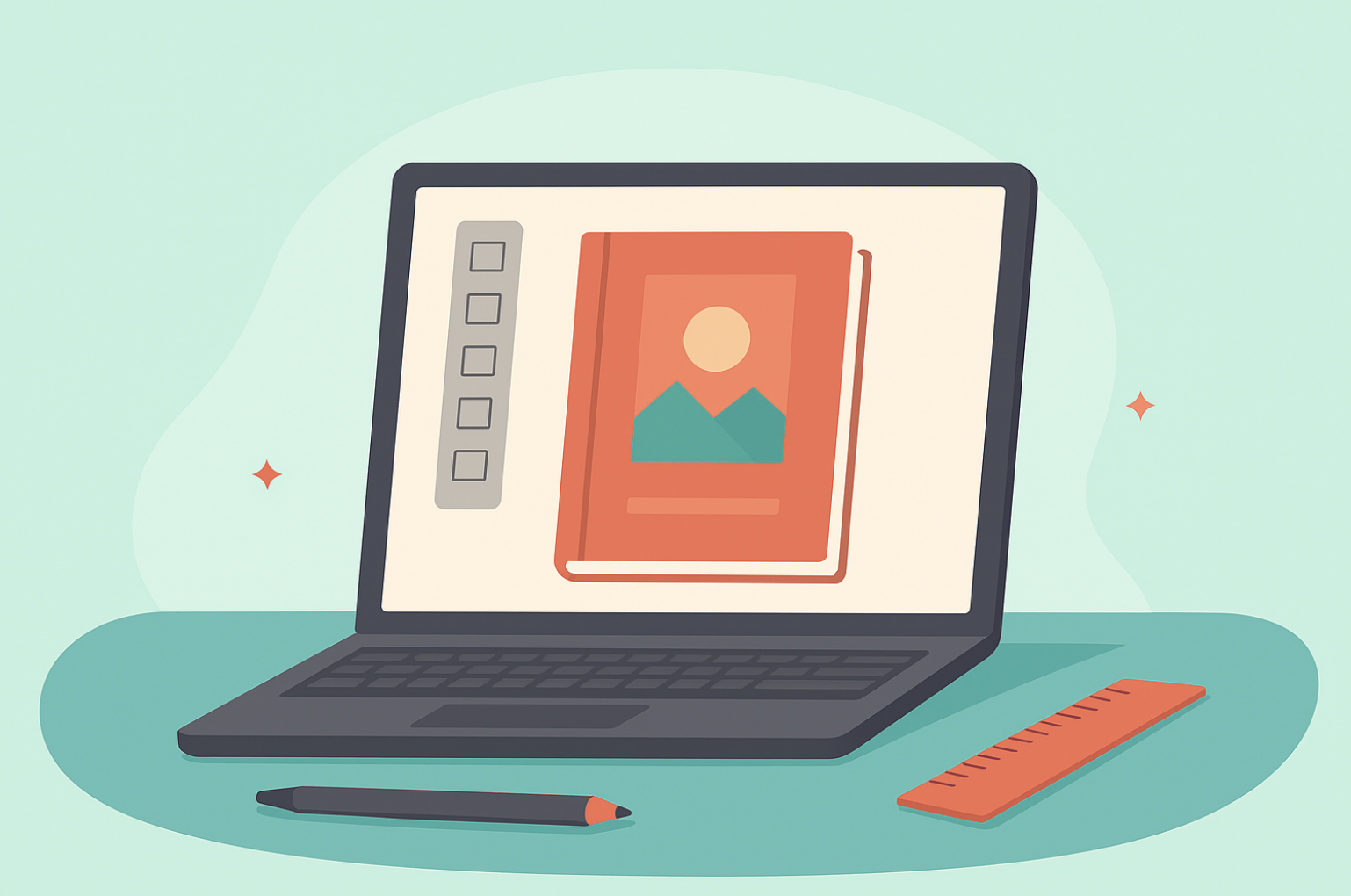In the vast ocean of literature, a book cover serves as the beacon that draws potential readers toward its shores. It is the first point of contact, the initial impression, and often the deciding factor in a reader’s choice to explore further or pass by. A well-crafted cover is crucial in capturing attention in a crowded marketplace. The artistry of the cover conveys the essence of the story within, hinting at the adventure, emotion, and depth awaiting inside. It’s not merely an aesthetic choice but a strategic one, influencing a reader’s perception and expectations even before the first page is turned.
Illustration techniques play a pivotal role in this art of engagement, offering a diverse palette of styles, from intricate hand-drawn lines to bold digital compositions, each capable of evoking different emotions and reactions. These techniques are not just about creating beauty; they are tools in visual storytelling, adept at translating abstract concepts and complex narratives into a single, compelling image. Whether it’s the whimsical charm of a children’s book or the dark allure of a mystery novel, the right illustration technique can bridge the gap between the story and its audience, providing a visual foretaste of the literary journey ahead.
This article delves into the symbiotic relationship between book covers and illustration techniques, exploring the idea of how artists and designers employ various methods to bring stories to life before a word is read. It’s a celebration of the creativity and thoughtfulness that goes into book cover design, underscoring the importance of this visual art form in the literary world.
The Essence of Book Cover Design
Book cover design is an art form that combines graphic design, illustration, and marketing to create the outermost layer of a literary work. It is the first visual representation and embodiment of the text within, crafted to captivate and communicate. In the publishing industry, the book cover is not just a protective wrapping but a critical marketing tool. It has the challenging task of standing out on shelves or in online thumbnails, making a compelling case for the reader’s time and investment in a split second. The design of a book cover involves a delicate balance of aesthetics, thematic elements, and commercial appeal, aiming to bridge the gap between the author’s vision and the reader’s expectations.
The interplay of visual elements such as images, typography, color schemes, and layout on a book cover is deeply intertwined with the book’s genre, theme, and tone. A romance novel, for instance, might feature warm hues and intimate imagery, while a science fiction book might lean towards stark, bold fonts and futuristic illustrations. This visual coding helps readers to instantly recognize the genre, setting the stage for the narrative experience they can expect. The choice of these elements in book cover design is not arbitrary; each is a calculated decision meant to evoke specific feelings and responses pertinent to the book’s content.
A well-designed book cover does more than just attract attention; it serves as a sneak peek into the world within its pages. It hints at the storyline, the emotional journey, and the unique selling points of the book without giving too much away. For example, an illustrated cover of a children’s book might showcase the main characters and setting in a whimsical, engaging manner, promising adventure and fun. On the other hand, a non-fiction book cover might use symbolic imagery and bold, clear text to convey its authoritative tone and the value of the insights it offers.
Furthermore, the design of book covers reflects the book’s tone, subtly informing the reader about the narrative voice and the pace of the story. A minimalist cover with a quiet, simple design could suggest a reflective, introspective narrative, while a vibrant, chaotic cover might indicate a fast-paced, action-packed plot. This visual shorthand helps set the reader’s expectations, ensuring that the book reaches its intended audience.
In essence, the design of a book cover is a multifaceted process that plays a crucial role in a book’s journey to its readers. It synthesizes artistic expression with market strategy, encapsulating the essence of the story in a single, impactful image. A well-conceived and illustrated book cover is a promise, an invitation, and a glimpse into the narrative world, crafted to entice, inform, and intrigue potential readers at first glance.
Key Illustration Techniques for Book Covers
The realm of book cover design is a playground for creativity, where various illustration techniques converge to tell stories in visual form. Each technique brings its flavor, setting the tone and mood even before the first line of text is read. Understanding these techniques and their impact is crucial for designers and illustrators aiming to craft covers that resonate with readers and encapsulate the essence of the book’s narrative.
Digital Painting
Digital painting has revolutionized the way artists create, offering unparalleled versatility and precision. This technique allows for a vast range of styles, from photorealistic portraits to whimsical landscapes, all created using digital tools and software. Digital painting is particularly effective for genres like fantasy and science fiction, where imaginative and intricate worlds come to life with vivid detail and dynamic color palettes. The cover of “The Night Circus” by Erin Morgenstern, for example, features digital artwork that captures the magical and mysterious atmosphere of the novel, drawing readers into its enchanting world with just a glance.
Collage
Collage, a method where various materials and images are combined to create a new whole, offers a unique textural and conceptual depth to book covers. This technique can blend photographs, textures, typographic elements, and traditional artwork, creating layers of meaning and visual interest. Collage is particularly suited to memoirs, historical fiction, and literary fiction, where the juxtaposition of elements can reflect the multifaceted narratives and complex characters. The cover of “The Secret History” by Donna Tartt uses collage to suggest the intertwining of characters’ lives and the layered secrets within the story, compelling the viewer to delve deeper.
Traditional Sketching and Painting
Traditional sketching and painting bring a tactile, human touch to book covers, often evoking a sense of nostalgia and timelessness. Whether it’s a delicate watercolor landscape or a bold ink sketch, these techniques connect with readers on an intimate level, suggesting a handcrafted, personal story. Traditional methods are especially fitting for children’s books, historical novels, and literary works where a sense of connection and warmth is paramount. “The Tale of Peter Rabbit” by Beatrix Potter, with its iconic watercolor illustrations, exemplifies how traditional techniques can create a charming and inviting book cover features that appeals to both children and adults.
Choosing the Right Technique
Selecting the appropriate illustration technique for a book cover is a critical decision that hinges on several factors: the book’s genre, the target audience, the narrative tone, and the emotional journey within. A children’s book might benefit from the playful, imaginative potential of digital illustration, while a collection of poetry might call for the subtle nuances of watercolor to convey its lyrical beauty. The key is to align the illustration style with the book’s core message and emotional landscape, creating a visual metaphor that speaks to the reader’s imagination and curiosity.
For instance, a dark fantasy novel might use a digital painting with rich, somber tones and complex compositions to hint at the intricate world-building and intense drama that awaits. Conversely, a light-hearted romance could feature a collage of pastel shades and whimsical elements, setting a playful, optimistic tone.
Your Publishing Journey Awaits – Start NowCase Studies of Successful Book Covers
“The Goldfinch” by Donna Tartt
The cover of “The Goldfinch” features a digital painting of the eponymous painting around which the story revolves. The choice of a digitally painted image allows for a precise reproduction of the painting’s detail, with added atmospheric effects that hint at the novel’s themes of art, loss, and obsession. The cover art’s success lies in its ability to intrigue and invite interpretation, mirroring the novel’s exploration of the profound impact of art on life.
“A Monster Calls” by Patrick Ness
“A Monster Calls” uses traditional ink sketches that spill hauntingly across the cover, perfectly encapsulating the novel’s exploration of dark themes through the eyes of a young protagonist. The raw, expressive lines of the sketches convey the turmoil and emotional depth of the story, drawing readers into the narrative’s complex emotional landscape. The cover stands as a testament to the power of traditional sketching in evoking deep, visceral responses.
“S.” by J.J. Abrams and Doug Dorst
The cover of “S.” employs a collage technique, combining various textual and visual elements to reflect the novel’s layered, mysterious narrative structure. The eclectic mix of images, text snippets, and aged paper textures immediately suggests a story rich in puzzles, history, and intrigue. The collage cover not only grabs attention but also serves as a visual echo of the book’s multifaceted storytelling approach.
In conclusion, the choice of illustration technique for a book cover is a nuanced decision that plays a crucial role in connecting a book to its ideal readership. By carefully considering the book’s essence and the emotional journey it offers, designers and illustrators can select the most fitting method to craft covers that not only attract but also resonate with potential readers. Through the strategic use of digital painting, collage, traditional sketching, and other techniques, book covers become compelling visual narratives in their own right, promising and preluding the stories held within their pages.
Your Publishing Journey Awaits – Start NowUnderstanding the Design Elements
The creation of a book cover is a meticulous process that involves more than just the selection of an illustration technique. It requires a deep understanding of design elements such as color palette, typography, and visual hierarchy, each playing a critical role in conveying the book’s essence and attracting the reader’s eye. These elements do not work in isolation but in concert, creating a harmonious visual experience that aligns with the book’s theme and contributes to its brand identity.
Color Palette
The color palette of a book cover is foundational in setting the mood and evoking specific emotions. Colors speak a silent language, with each hue carrying its own psychological weight. Warm colors like red and orange can evoke feelings of excitement and passion, making them popular choices for genres such as romance and thrillers.
In contrast, cool colors like blue and green tend to have a calming effect, often used in mystery or science fiction covers to create a sense of intrigue and suspense. The use of color can also tie a book to its genre, with certain palettes becoming indicative of specific literary categories. For example, a pastel color palette might be used for a light-hearted novel, while a dark, monochromatic scheme could suggest a more serious, gritty narrative.
Typography
Typography, the art of arranging type, is another pivotal element in book cover design. The choice of font, size, and arrangement of text not only ensures readability but also contributes to the book’s personality. A whimsical, hand-written font might be chosen for a children’s book to convey playfulness, while a sleek, bold sans-serif font could be used for a modern thriller, projecting a sharp, contemporary feel. Typography can also be used to create visual interest and hierarchy, guiding the reader’s eye to the most important information, typically the title and author’s name, and then to secondary details like taglines or endorsements.
Visual Hierarchy
Visual hierarchy is the principle of arranging elements in a way that implies importance, guiding the reader’s attention through the cover in a deliberate manner. This is achieved through the use of scale, color contrast, and positioning. The title, for example, is often the most prominent element, followed by the author’s name and other textual or graphic elements. A well-defined hierarchy ensures that the cover communicates effectively, allowing readers to quickly grasp the book’s essential details. It also plays a significant role in the cover’s aesthetic appeal, creating a balanced, pleasing composition that invites closer inspection.
Leveraging Design Principles
The application of design principles such as balance, contrast, alignment, and repetition is crucial in creating a cohesive and engaging book cover. Balance ensures that the cover does not feel too weighted to one side, providing a sense of stability. Contrast can be used to highlight key elements, drawing attention to the title or central imagery. Alignment creates a clean, orderly appearance, while repetition can unify the design, reinforcing certain motifs or themes associated with the book.
The strategic use of these design principles, in tandem with color psychology, can significantly enhance the cover’s ability to capture the reader’s attention. For instance, a high-contrast color scheme can make the title pop, ensuring it catches the eye even from a distance. Similarly, the thoughtful use of alignment and balance can create a visual flow that leads the reader naturally from one element to the next, culminating in a compelling call to action—to pick up the book and delve into its pages.
In essence, the intricate interplay of color, typography, and visual hierarchy in book cover design is what transforms a mere illustration into a powerful book marketing service. These design elements work together to encapsulate the book’s theme, convey abstract ideas, establish its brand identity, and engage the reader’s curiosity and emotions. By skillfully leveraging these elements, designers can create covers that not only stand out on the shelf but also resonate deeply with potential readers, inviting them into the unique world of the story.
The Role of the Front and Back Cover
In the symphony of book design, the front and back covers play distinct yet harmonious roles, each contributing to the overall narrative the book presents to the world. While the front cover acts as the face of the book, capturing attention and setting expectations, the back cover serves as the final persuasion, offering depth and context to the initial impression.
The Front Cover: The Invitation
The front cover is the book’s initial handshake with potential readers. It is the most visible aspect of the book, often seen first in bookstores and online thumbnails. Its primary role is to attract attention through compelling imagery, intriguing titles, and eye-catching design elements. The front cover sets the tone for the book’s genre, mood, and content, using visual cues and illustration techniques to hint at the story within. For instance, a fantasy novel might feature an intricate illustration of a mystical world, while a memoir might opt for a poignant, evocative photograph of the author. This cover acts as a visual invitation, enticing readers with the promise of a story that resonates with their interests and emotions.
The Back Cover: The Persuader
Once the front cover has caught the reader’s eye, the back cover takes over to provide substance to the allure. It typically contains a brief synopsis or blurb that teases the book’s plot or themes without giving away too much. This concise text aims to hook the reader, offering just enough detail to ignite curiosity and compel them to explore further. The back cover may also feature an author bio, providing insights into the author’s background and other works, which can establish credibility and build a connection with the reader.
Illustration and design play critical roles on the back cover as well, though often in a more subdued manner than on the front. The artwork or design elements chosen for the back cover must complement the front, ensuring a cohesive visual experience that extends the narrative allure. The use of images, color schemes, and typography must support the blurb’s message, enhancing its appeal without overwhelming it. For example, a children’s book might use bright colors and playful fonts on the back cover to maintain the joyful, whimsical feel established on the front.
The Cohesive Narrative
The interplay between the front and back covers is a delicate dance of attraction and persuasion. The front cover’s illustration and design draw readers in, while the back cover’s content convinces them to stay. This seamless transition from visual allure to narrative substance is crucial in converting a browser into a buyer. The design elements across both covers must tell a cohesive story, with each cover complementing the other in style, color, and theme. This continuity strengthens the book’s visual identity, making it more memorable and recognizable to potential readers.
In summary, the roles of the front and back covers in book design are both distinct and interconnected. The front cover’s primary task is to captivate, using illustration and design to make a striking first impression. The back cover, on the other hand, delves deeper, offering a glimpse into the book’s heart through a compelling synopsis and author insights. Together, they form a complete picture that not only attracts readers but also gives them a reason to delve into the pages sandwiched in between.
The Creative Process of a Book Cover Designer
The journey of designing a book cover is a nuanced tapestry woven from threads of creativity, collaboration, and technical skill. It’s a process that begins with abstract concepts and evolves through various stages into a tangible piece of art that encapsulates the essence of the book. This journey is not just about creating aesthetically pleasing book cover illustrations but about telling a story that resonates with potential readers, enticing them to explore the world within the pages.
From Concept to Design
The creative process typically kicks off with a briefing session where the author, publisher, or both share their vision, themes, and key elements of the book with the designer. This initial stage is crucial for the designer to understand the narrative depth, emotional tone, and the intended target audience. It’s at this point that abstract ideas begin their transformation into visual concepts.
Following the briefing, designers embark on a research phase, immersing themselves in the book’s genre, analyzing trends, and drawing visual inspiration from existing works while striving to maintain originality. This research informs the conceptualization phase, where initial ideas are sketched out. These early sketches are exploratory, playing with different illustration techniques, color schemes, typography, and imagery to find the right visual language for the book.
The Collaborative Dance
A pivotal aspect of the cover design process is the collaboration between the designer, the author, and sometimes the illustrator (if separate from the designer). This collaboration ensures that the cover accurately reflects the author’s vision and the book’s narrative. Regular discussions and feedback sessions help refine ideas, with the author providing insights that might influence the direction of the design. This iterative process is a delicate balance of creative input and practical considerations, aiming to create a cover that is both artistically satisfying and marketable.
Translating Abstract Ideas into Visuals
One of the most challenging aspects of book cover design is translating the book’s abstract themes and emotional nuances into a visual format. Designers must distill complex narratives into a single, impactful image that communicates the essence of the book. This often involves symbolic representation, where elements of the design stand in for larger themes or aspects of the story. For instance, a shattered glass illustration might symbolize broken relationships or lost innocence, key themes in a novel.
Designers also grapple with the challenge of creating a cover that stands out in a crowded market while remaining true to the genre’s visual conventions. This balancing act requires creative innovation within the boundaries of genre expectations, ensuring that the book reaches its intended audience while offering something fresh and compelling.
Finalizing the Design
As the design moves closer to finalization, the focus shifts to refining the details—fine-tuning the color palette, adjusting typography, and ensuring that all elements are harmoniously balanced. This stage often involves digital mock-ups, allowing the designer to visualize how the cover will look in various formats, from a physical book to an online thumbnail.
The final review phase is critical, involving a thorough evaluation of the design by the author, publisher, and designer. This is the moment to ensure that every element of the cover aligns with the book’s vision and market positioning. Feedback is incorporated, revisions are made, and the design is polished until it meets all parties’ satisfaction.
Overcoming Challenges
Throughout this process, designers often face challenges such as tight deadlines, differing visions between the author and the publisher, and the daunting task of creating a design that appeals to a wide audience. Navigating these challenges requires flexibility, creativity, and a deep understanding of both the book’s content and the market dynamics.
The Final Product
The culmination of this creative journey is a book cover that is not just a piece of artwork but a strategic tool in the book’s marketing arsenal. It’s a visual handshake between the author and potential readers, offering a glimpse into the world created by the author’s words. The final cover stands as a testament to the collaborative effort between the author, illustrator, and designer, a synergy of visions that brings the essence of the book to life in visual form.
In essence, the process of designing a book cover is a multi-faceted journey that blends art, collaboration, and marketing acumen. It’s a process that demands not only creative talent but also a deep empathy for the story, ensuring that the cover becomes a bridge connecting the author’s world with the reader’s imagination
Navigating Book Cover Design: Traditional Challenges vs. AI Solutions
When embarking on the journey to design a book cover, creators face a pivotal choice. The traditional route involves mastering a myriad of skills, from understanding color psychology and mastering illustration to honing graphic design abilities. This path, while rewarding, often leads to mediocre outcomes for those new to the field. Alternatively, hiring a professional graphic designer promises high-quality results but comes with a hefty price tag, making it an impractical choice for many.
Enter the era of AI-driven solutions, where efficiency meets creativity. A standout in this innovative landscape is the AI-powered publishing platform, Spines. They offer cover design tools that revolutionize the design process by leveraging the power of AI to analyze an entire manuscript, distill its essence, and generate professional, genre-specific, cover designs giving multiple options. The AI delves into a vast database of successful books, ensuring the generated covers resonate with proven market trends.
Spines’ cover design software doesn’t stop at the front cover; it extends its magic to craft the back cover and spine, offering a comprehensive design solution. Remarkably, Spines stands alone in providing this all-encompassing service. Accessibility is at the heart of Spines’ mission, allowing authors to harness this powerful tool for free. The process is straightforward: sign up, upload your manuscript, and let AI transform your cover design journey from daunting to delightful.
The artistry of illustration techniques is instrumental in sculpting stunning book covers that not only captivate but also communicate the soul of the narrative. A well-conceived book cover illustration is more than an adornment; it’s a critical catalyst for a book’s success, inviting readers into a unique literary journey. The lasting impression a skillfully designed cover leaves on its audience underscores its significance in the literary world. It’s a silent storyteller, setting the stage for the wonders within, proving that a book’s cover is indeed its first chapter.







